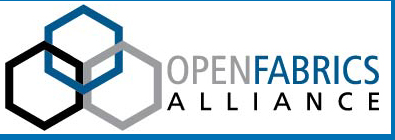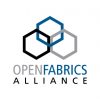The mission of the OpenFabrics Alliance (OFA) is to accelerate the development and adoption of advanced fabrics. ONUG, aggregates use case requirements across its Global 2000 members with a focus on software based infrastructure that spans public and private clouds. So why is the OFA here talking with you about interconnects and fabrics? Simple – it’s because high performance networks have been shown to be a game changer in transforming high performance computing (HPC) systems and they are poised to do the same in the enterprise.
Interconnects as a Game Changer
The world of HPC has over the past decade experienced explosive growth, with modern HPC systems reaching unprecedented levels of scalability, performance, and capacity. This explosion has been fueled in no small part by the arrival earlier this decade of a new class of interconnects which enable applications to communicate in entirely new ways. These high-performance networks, which were once considered a niche technology, are quickly entering the mainstream and they promise to sweep across the commercial landscape with as profound an impact as they have had in the HPC marketplace.
These interconnects were game changers because they introduced new networking techniques that offered unparalleled bandwidth and extremely low latencies at a cost of almost zero CPU utilization. These characteristics turn out to be the keys to a new level of scalability and performance. The HPC arena where these networks first matured has a long history of pathbreaking work because they simply had no other choice if they were to reach their performance and scalability goals.
Who is the OpenFabric Alliance, and How We Can Help
The OFA started life in 2004 to feed this ‘need for speed’ by developing open-source based network stacks and APIs that system developers could use in deploying these new, fast networks. Our initial focus was on Linux, but that quickly expanded to include Microsoft Windows-based systems, ultimately becoming operating system agnostic.
We currently support three network technologies: InfiniBand, iWARP and RDMA over Converged Ethernet (RoCE). RoCE and iWARP are both based on familiar Ethernet, while InfiniBand, where the revolution began, is based on its own unique transport technology. We continue to expand by supporting new networks as they emerge including Cray’s Aries networks, and Intel’s OmniPath Architecture.
Today, the OFA is an alliance of major networking vendors, OEMs, and consumers of networking services. We are an open organization that historically built its network stacks on top of established standards, but which has expanded significantly into directly developing new network application specific interfaces (APIs).
Building a Bridge
Over the years, we’ve learned that the OFA is most effective when its work is guided by the consumers of our software and APIs. ONUG is an assembly of sophisticated consumers who are in a position to define requirements that can be used to drive the OFA in refining our software stacks and tune them for your specific applications. In return, we deliver networking software that works with major hardware from major networking vendors such as Mellanox, Intel, Cray and others that allows you to take your IT systems to the next level in terms of scalability and performance.
The Proof is in the Pudding
Probably the best proof point of the OFA’s success over the years is the dominance of so-called verbs-based technologies as reported in the semi-annual “TOP500” report which, as the name suggests, list the top HPC installations worldwide.
Why This All Matters to ONUG
So, what’s the specific relevance to ONUG and its members? Quite simply, it is because this pattern of early adoption in HPC followed by mainstream adoption has been repeated many times and there is evidence that the cycle is being repeated again. We can point, for example, to the use of InfiniBand-style networks in high frequency trading applications, which demonstrates competitive advantage to early adopters.
But it’s not just a competitive advantage; as these network technologies find their way further into the mainstream, we suspect that more and more large-scale systems will depend on them for scalability, reliability, and performance, exactly as has happened in the bellwether HPC space.
Our objective in reaching out to ONUG is to connect with a special group we’ll call “technology strategists” – those individuals whose job it is to recognize important, emerging technologies and to develop appropriate adoption strategies. We hope you’re here and listening.
It’s Not a Niche Anymore
Thanks to the long incubation period in the demanding HPC space, our technologies are now mature, proven, cost-effective and capable of meeting data center reliability requirements. At this point, we are faced with a clear opportunity to further tailor the future development of these technologies to match your needs – whether that is in Enterprise Computing, Artificial Intelligence, Machine Learning, Data Analytics, or the Cloud. The OFA, which is based on fostering collaboration, is in an ideal forum to broker the discussion between you, the consumers of network technology, and the suppliers of such technologies, and along the way to provide common, open source solutions that have been successful in the past in smoothing the path to adopting such technologies. For its part, ONUG is perfectly positioned to represent the point of view of the consumer community in influencing the on-going development of these exciting technologies.
Our Chair, Paul Grun, will be at the Fall Conference. He’ll be there to learn more about ONUG, but also to engage with any of you who wish to know more about our central messages, including why we think the OFA is important to ONUG members. You can reach Paul at the conference via cell phone at (503) 703-5382. Or, you can drop an email to press@216.137.189.21, or visit our website www.openfabrics.org for more information.
By Jim Ryan, Executive Director, the OpenFabrics Alliance

